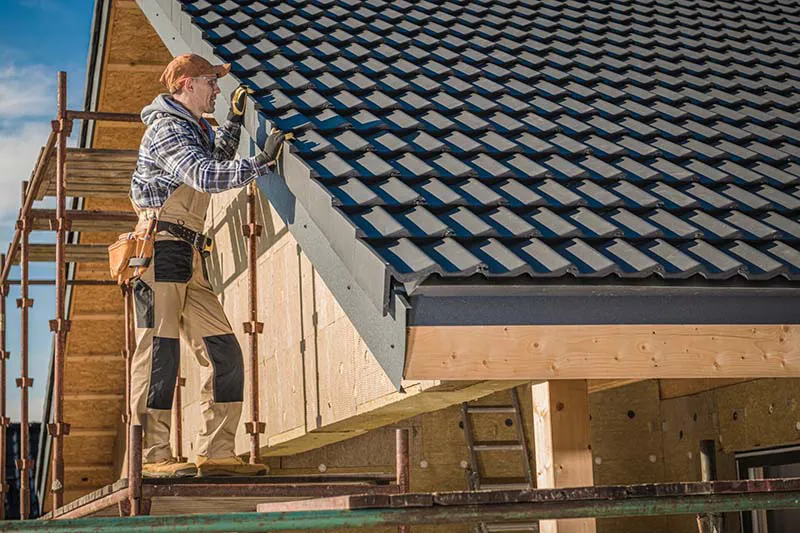Roof ventilation is an essential aspect of maintaining a healthy and energy-efficient home. Proper ventilation ensures that your attic has a balanced flow of air, preventing a myriad of issues that can arise from stagnant, moist, or overly hot air. At The Roofing Center, we understand the intricacies of roof ventilation and are here to guide you through its importance and benefits.
Understanding the Different Types of Roof Vents
Intake Vents: These vents are crucial for allowing fresh air into your attic. They are typically found in two forms:
- Soffit Vents: Positioned along the eaves of your roof, they play a pivotal role in drawing fresh air into the attic.
- Gable Vents: These are strategically installed on the gable ends of the roof, further aiding in the intake of fresh air.
Exhaust Vents: As the name suggests, these vents are responsible for letting out the hot air that accumulates at the top of your attic. They come in two primary types:
- Ridge Vents: These are located along the ridgeline of your roof, ensuring that the hot air rising to the attic’s top is efficiently expelled.
- Roof Vents: Installed directly on the roof’s surface, these vents are another means to release the hot air from the attic.
Warning Signs of Inadequate Roof Ventilation
It’s essential to recognize the symptoms of poor roof ventilation early on to prevent potential damage. Some of the telltale signs include:
- Growth of mold and mildew
- Unusually high energy bills
- Premature wear and tear of shingles
- Formation of ice dams during winter
Why Proper Roof Ventilation Matters
Energy Efficiency: One of the most significant advantages of a well-ventilated roof is the enhancement of your home’s energy efficiency. By maintaining a consistent attic temperature, there’s a reduced reliance on heating and cooling systems, leading to noticeable savings on energy bills.
Extended Roof Lifespan: Proper ventilation ensures that your roof materials are not subjected to extreme heat or moisture, thereby prolonging their lifespan.
Protection Against Moisture Damage: With adequate ventilation, the risk of moisture buildup is minimized. This, in turn, reduces the chances of mold, mildew, and rot affecting your attic and roof structure.
Minimized Risk of Ice Dams: For those residing in colder regions, a well-ventilated roof is crucial in preventing the formation of ice dams. By ensuring a consistent attic temperature, the snow on your roof melts and refreezes at a controlled rate.
Making the Right Choice for Your Home
Every home is unique, and so are its ventilation needs. Factors like the local climate, the design of your roof, and the size of your attic play a significant role in determining the ideal ventilation system. It’s always recommended to consult with a professional roofer from Fort Collins to ensure that your home gets the best solution tailored to its needs.
At The Roofing Center, we pride ourselves on providing top-notch roofing service in Fort Collins CO. Our team of Fort Collins roofing contractors is always ready to assist you in making informed decisions about your roof’s health and efficiency. If you’re considering enhancing your roof’s ventilation or need roof repair in Fort Collins, don’t hesitate to reach out to us. Your home deserves the best, and we’re here to deliver just that.
>







